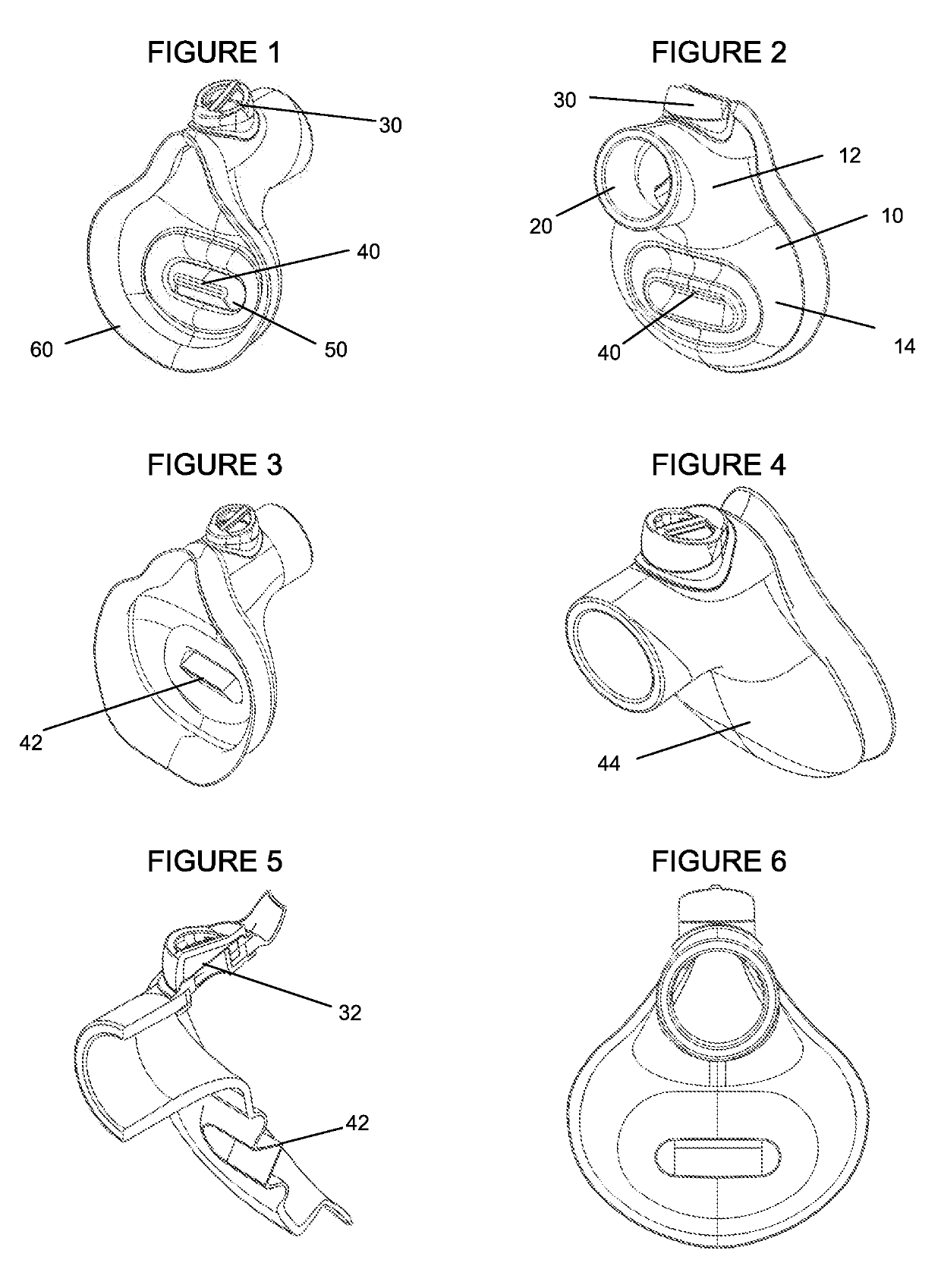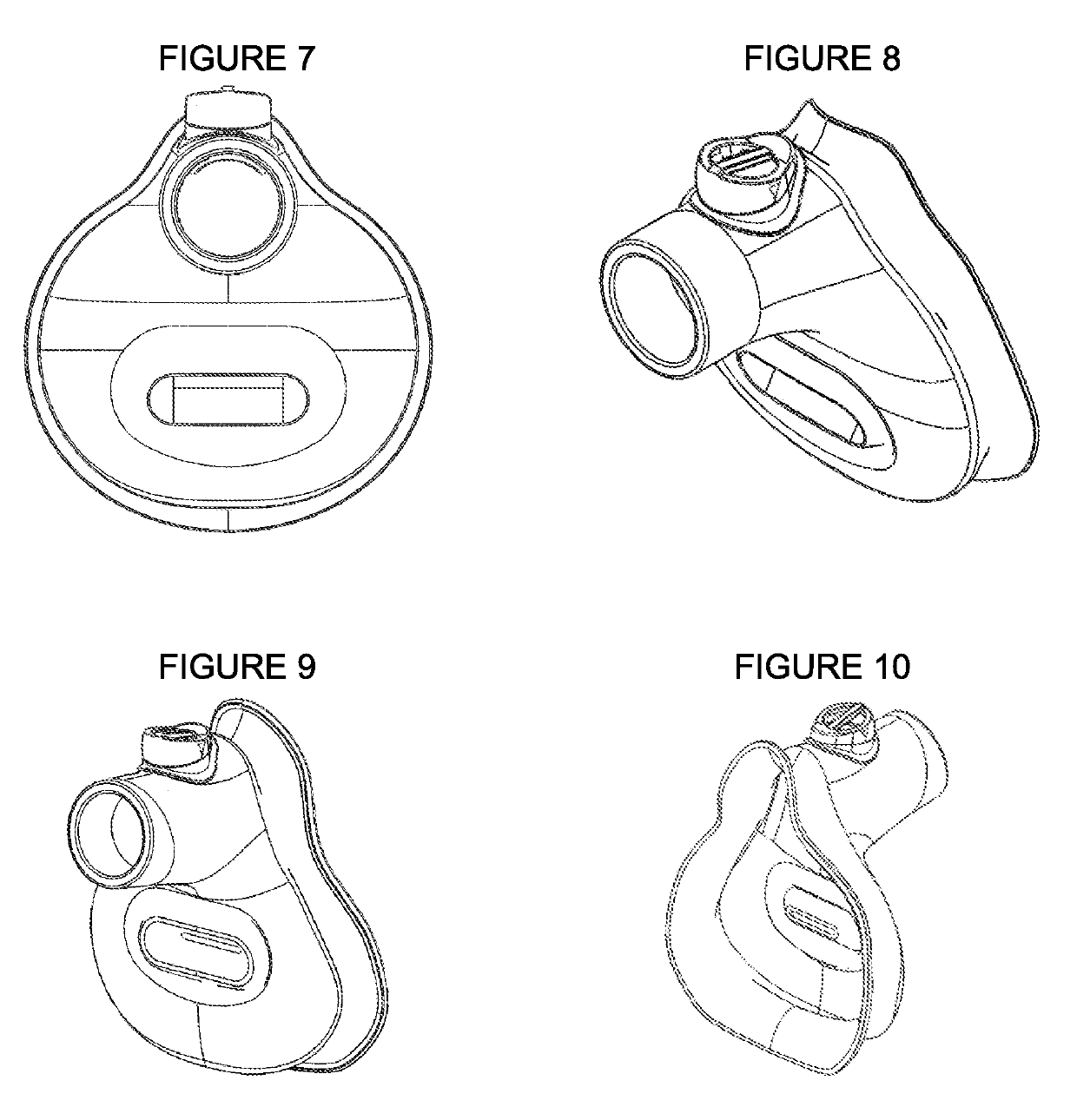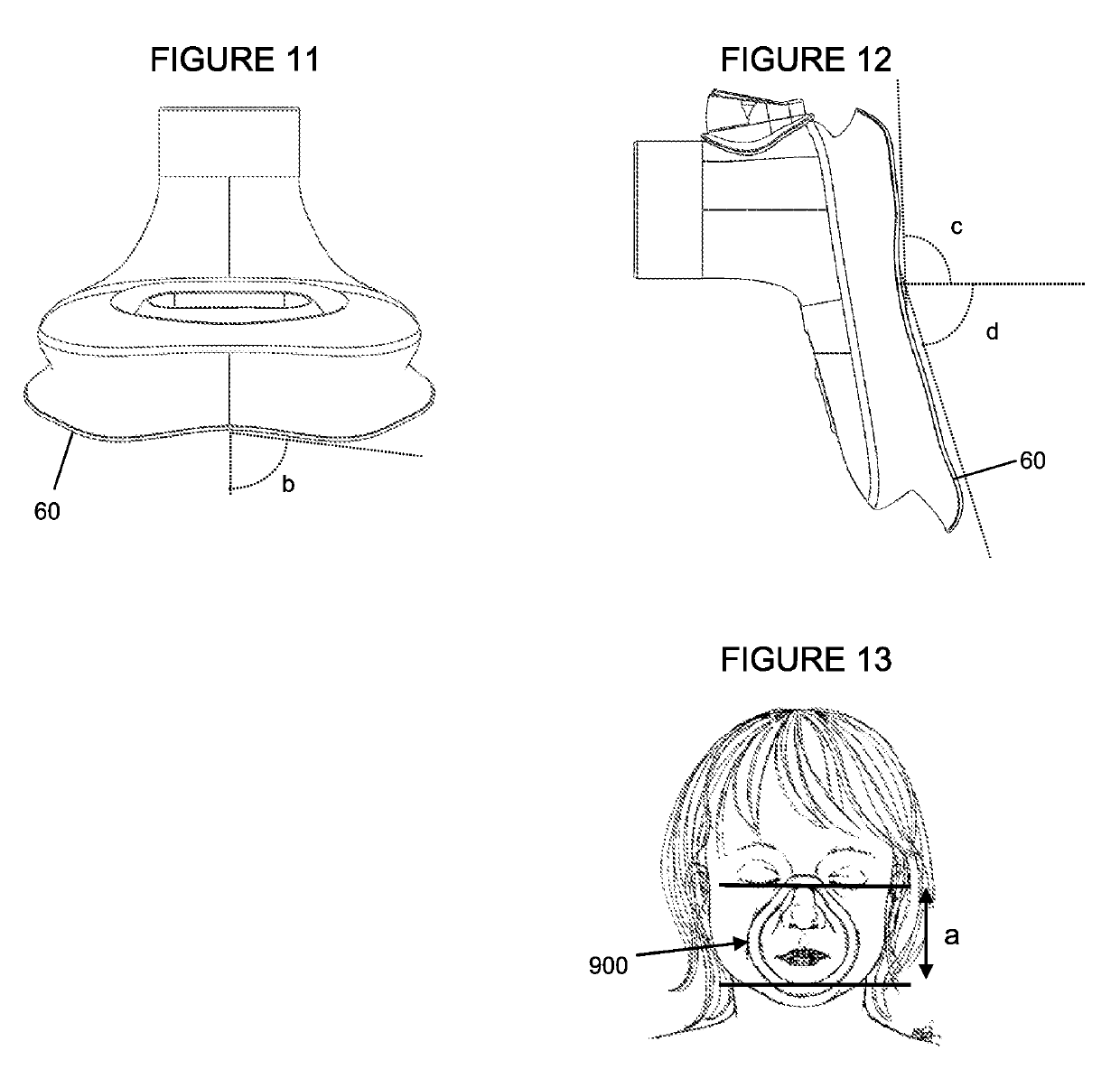Mask for administration of inhaled medication
a mask and inhalation technology, applied in the field of masks for the administration of inhalable drugs, can solve the problems of agitation and distress in children, lack of coordination, understanding or communication skills necessary to use conventional drug inhalation devices, and the need for effective devices
- Summary
- Abstract
- Description
- Claims
- Application Information
AI Technical Summary
Benefits of technology
Problems solved by technology
Method used
Image
Examples
Embodiment Construction
[0029]As used herein, the term “mask” refers to a flexible molded elastomeric body that covers the nose and mouth of a patient in need of an inhalable medication, and wherein the mask channels inhalable medication to the nose of the patient. The term “soother device” is a device intended to be sucked on in the mouth of an infant or small child. The term “anterior” refers the direction or face of the apparatus in the direction of the face of the patient. The term “posterior” is the direction or face facing away from the patient.
[0030]In an embodiment of the invention disclosed herein, a mask for administering an inhalable medication to a patient, with a flexible ergonomically shaped molded elastomer face mask body covering the nose and mouth of the patient, comprising a nose section and a mouth section, wherein the edge of the mask in contact with the patient's face is a thin soft lip; wherein the edge of the mask in contact with the face is contoured with at least one inflection poi...
PUM
 Login to View More
Login to View More Abstract
Description
Claims
Application Information
 Login to View More
Login to View More - R&D
- Intellectual Property
- Life Sciences
- Materials
- Tech Scout
- Unparalleled Data Quality
- Higher Quality Content
- 60% Fewer Hallucinations
Browse by: Latest US Patents, China's latest patents, Technical Efficacy Thesaurus, Application Domain, Technology Topic, Popular Technical Reports.
© 2025 PatSnap. All rights reserved.Legal|Privacy policy|Modern Slavery Act Transparency Statement|Sitemap|About US| Contact US: help@patsnap.com



